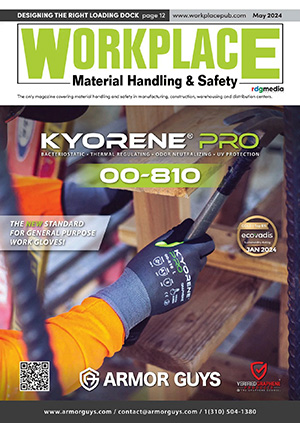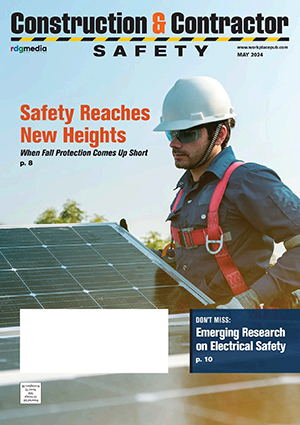Which Pallet Rack is Right for Your Facility?
An overview of the pallet rack types for the most frequently used storage and organization systems.
By: Maureen Paraventi
What are the dimensions and weights of the pallet loads that are stored in your warehouse, factory, or retail or distribution center? How often and how quickly do these loads need to be accessed? Are there space limitations that make density a more important factor than easy access? Is cost the major consideration?
Making decisions about pallet rack needs was a lot easier in the 1950s, when there were just a few basic types from which to choose. They were developed around that time in response to the increasingly ubiquitous use of pallets to store and transport goods — a significant improvement over the simple, untidy stacking of non-uniform boxes and crates that had previously made material handling slow and labor intensive.
The early options included selective racks that offered direct access to each pallet and drive-in racks that allowed forklifts to — as the name suggests — drive into the rack system. These types of racks are still in use, although they’ve undergone considerable refinement in the decades since they were introduced. They’ve been joined by an array of other pallet rack types, providing planners with a multitude of options when deciding how best to store inventory.
Pallet racks are fundamental to warehouse organization schemes, but choosing the wrong ones for your facility’s storage needs can hinder productivity and add extra time to the process of storing and moving goods.
Here are some of the most used pallet rack types and systems:
- Selective – When implemented into the architectural design of the storage buildings, this kind of racking can do double duty, by both storing pallet loads and supporting the roof of the facility (which is known as a rack supported building). Selective pallet racking can be found in “big box” retail store distribution centers and in other industries where inventory typically has a quick turnover, because it offers fast and easy accessibility to products.
- A structural configuration is adjustable and able to accommodate especially heavy items.
- A roll formed configuration can also be adjusted, to different heights, in order to hold products of different sizes.
- Drive in racks – As mentioned above, this type of system lets forklifts drive into a bay (a lane of stacked rows), but the forklift must exit at the same place it entered. This necessitates last in, first out (LIFO) storage, which is not appropriate for all material handling circumstances.
- Drive through racks – This system also allows forklifts to enter a bay, but they are able to exit at the other end of the bay and can use first in, first out (FIFO) storage. Both drive in and drive through racks are a high-density, budget-friendly method, but are not ideal in quick turnover environments.
- Very narrow aisle (VNA) – This arrangement makes the most of available space. It does require the use of VNA forklifts with rotating forks, some of which navigate using wire guidance systems embedded in the floor.
- Double deep – The cost is low and the density is high with double deep pallet rack systems, but stored pallets must be retrieved with the use of a double-deep reach forklift. High throughput operations can benefit from this system, which – as you can guess – stores double the amount in the same amount of floor space. A disadvantage of double deep racks is reduced selectivity.
- Pushback – This dense and efficient storage system is LIFO, not FIFO. It reduces aisle space and increases bay depth, so that up to six pallets can fit in each. Rows of pallets are moved using a cart and angled ray system.
- Pallet flow – Gravity is the magic ingredient in this FIFO racking system. Pallets move in a gravity flow lane formed by gravity roller tracks from the rear to the front, where they can be picked. Pallet flow is optimal for perishable products and facilities with limited storage space.
- Mobile – When inventory must be accessed, pallet racks mounted on mobile “carriages” move along rails in the floor to create moveable aisles. Also called high-density pallet racking or compact pallet racking, mobile pallet racking can be found in distribution centers, factories and warehouses. It eliminates the space needed for access aisles and can be customized to fit specific storage requirements.
Whatever kind of inventory your company needs to organize and manage, and whatever space is available for doing so, choosing and using the right pallet rack systems will contribute to logistical efficiency and make your operations smoother and more productive. WMHS




